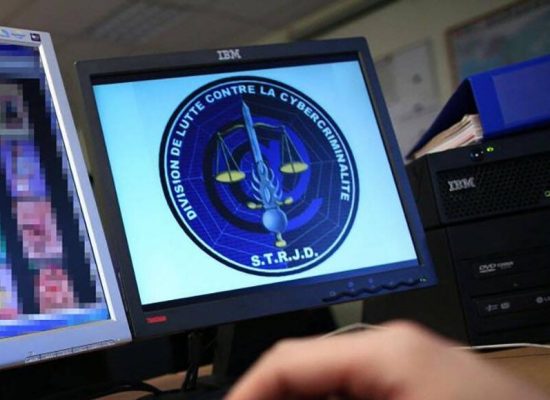Unmasking The Threat: North Korea's Penetration Of US Remote Employment

Table of Contents
North Korea's Cyber Capabilities and Motivations
North Korea possesses a surprisingly advanced cyber warfare apparatus, driven by both financial gain and geopolitical ambitions. This capability is largely attributed to groups like the Lazarus Group, a notorious state-sponsored hacking collective.
Sophisticated Hacking Techniques
Lazarus and similar groups are known for their proficiency in:
- Malware Development: Creating highly sophisticated and evasive malware designed to steal data, disrupt systems, and conduct espionage.
- Phishing Campaigns: Employing convincing phishing emails and social engineering tactics to trick victims into revealing sensitive information, including login credentials and financial details.
- Advanced Persistent Threats (APTs): Maintaining persistent access to compromised systems for extended periods, enabling sustained data exfiltration and intelligence gathering.
Examples of successful attacks include the 2014 Sony Pictures hack, the 2017 WannaCry ransomware attack (though not directly attributed, its sophisticated nature points to similar capabilities), and numerous attacks targeting financial institutions for illicit funds. These attacks are primarily motivated by the need to generate revenue to fund North Korea's weapons programs and circumvent international sanctions.
Targeting Remote Workers
Remote workers are particularly vulnerable due to several factors:
- Lack of Robust Corporate Security on Personal Devices: Many companies struggle to effectively extend their robust security protocols to employee's home networks and personal devices.
- Increased Reliance on Unsecured Networks: Remote workers often rely on public Wi-Fi or poorly secured home networks, increasing their susceptibility to attacks.
- Difficulty in Implementing Strong Security Protocols for a Dispersed Workforce: Managing and enforcing security policies across a geographically dispersed workforce is a significant challenge for many organizations.
Exploiting vulnerabilities in home networks and individual security practices is significantly easier for state-sponsored actors than breaching the defenses of a centralized corporate network.
Methods of Penetration: How North Korea Targets Remote Employees
North Korean actors employ a range of sophisticated methods to penetrate the defenses of US remote employees.
Phishing and Spear Phishing Campaigns
Phishing and spear phishing emails are frequently used, often mimicking legitimate communications from banks, employers, or other trusted entities.
- Convincing Phishing Emails: These emails often contain hyperlinks to malicious websites or attachments containing malware.
- Social Engineering Tactics: Attackers use psychological manipulation to trick victims into divulging sensitive information or downloading malicious software.
- Consequences: Successful phishing attacks can lead to identity theft, financial losses, data breaches, and significant reputational damage.
Malware and Ransomware Attacks
Malware and ransomware are deployed to steal data, disrupt operations, and extort money.
- Types of Malware: This includes keyloggers, spyware, Trojans, and ransomware variants specifically designed to encrypt sensitive data and demand a ransom for its release.
- Methods of Deployment: Malware is often delivered through phishing emails, malicious websites, or compromised software updates.
- Impact: These attacks can cripple businesses, leading to significant financial losses, operational downtime, and reputational damage.
Supply Chain Attacks
North Korea might compromise the software or hardware used by remote employees.
- Compromised Updates or Components: Malicious code could be inserted into seemingly innocuous software updates or hardware components, providing a backdoor into the victim's system.
- Impact: This type of attack can be devastating, affecting a large number of users simultaneously.
Mitigating the Threat: Protecting Against North Korean Cyberattacks
Protecting against North Korean cyberattacks requires a multi-pronged approach focusing on both individual and organizational security.
Strengthening Cybersecurity Practices
Individuals and companies must strengthen their cybersecurity practices:
- Multi-Factor Authentication (MFA): Implementing MFA adds an extra layer of security, making it significantly harder for attackers to access accounts even if they obtain login credentials.
- Strong Passwords: Using strong, unique passwords for all online accounts is crucial.
- Regular Software Updates: Keeping software and operating systems up-to-date patches vulnerabilities that attackers could exploit.
- VPN Use: Using a VPN encrypts internet traffic, protecting sensitive data from interception.
- Employee Security Awareness Training: Educating employees about phishing scams, malware, and other cybersecurity threats is essential.
- Endpoint Detection and Response (EDR) Solutions: Implementing EDR solutions can help detect and respond to malicious activity on endpoints.
Collaboration and Information Sharing
Effective mitigation requires collaboration:
- Sharing Threat Intelligence: Government agencies, private sector companies, and cybersecurity experts need to share threat intelligence to effectively counter North Korean cyberattacks.
- Developing Joint Cybersecurity Initiatives: Collaborative efforts are needed to develop and implement effective cybersecurity strategies.
- Promoting International Cooperation: International cooperation is crucial in combating state-sponsored cyberattacks.
Conclusion: Addressing the Growing Threat of North Korea's Penetration of US Remote Employment
North Korea's cyber activities targeting US remote workers pose a significant and evolving threat. Their sophisticated tactics and the potential for devastating consequences necessitate a proactive and comprehensive response. The vulnerability of remote workers highlights the urgent need for heightened security measures at both the individual and organizational levels. Don't become a victim. Learn more about protecting yourself and your company from North Korea's penetration of US remote employment by implementing robust cybersecurity measures today. For further information and resources, visit the Cybersecurity and Infrastructure Security Agency (CISA) website: [Insert CISA Link Here].

Featured Posts
-
 Exclusive Report Imminent Arrests Of Israeli Far Right Politicians By Icc
May 29, 2025
Exclusive Report Imminent Arrests Of Israeli Far Right Politicians By Icc
May 29, 2025 -
 Celebrity Big Brother Aj Odudu Breaks Silence On Mickey Rourke
May 29, 2025
Celebrity Big Brother Aj Odudu Breaks Silence On Mickey Rourke
May 29, 2025 -
 Inter Rent Reit Acquisition Sovereign Wealth Fund And Executive Chairs Bid
May 29, 2025
Inter Rent Reit Acquisition Sovereign Wealth Fund And Executive Chairs Bid
May 29, 2025 -
 100 Forintos Ermek Hogyan Noevelheted A Gyujtemenyed Erteket
May 29, 2025
100 Forintos Ermek Hogyan Noevelheted A Gyujtemenyed Erteket
May 29, 2025 -
 Tzanin Piro I Nea Eisaggeleas Tis Oyasingkton Orismos Apo Ton Tramp
May 29, 2025
Tzanin Piro I Nea Eisaggeleas Tis Oyasingkton Orismos Apo Ton Tramp
May 29, 2025
Latest Posts
-
 Alcaraz Through To Barcelona Open Round Of 16 Following Ruud
May 31, 2025
Alcaraz Through To Barcelona Open Round Of 16 Following Ruud
May 31, 2025 -
 Racial Abuse Case Beautician Receives No Jail Time
May 31, 2025
Racial Abuse Case Beautician Receives No Jail Time
May 31, 2025 -
 Musks Dogecoin Support No Regrets Over Trump Administration Involvement
May 31, 2025
Musks Dogecoin Support No Regrets Over Trump Administration Involvement
May 31, 2025 -
 Elon Musks Cost Cutting 101 Million In Dei Spending And 8 Million On Transgender Mice Eliminated
May 31, 2025
Elon Musks Cost Cutting 101 Million In Dei Spending And 8 Million On Transgender Mice Eliminated
May 31, 2025 -
 Elon Musks Pressure Campaign Did Trumps Team Block An Open Ai Uae Deal
May 31, 2025
Elon Musks Pressure Campaign Did Trumps Team Block An Open Ai Uae Deal
May 31, 2025
